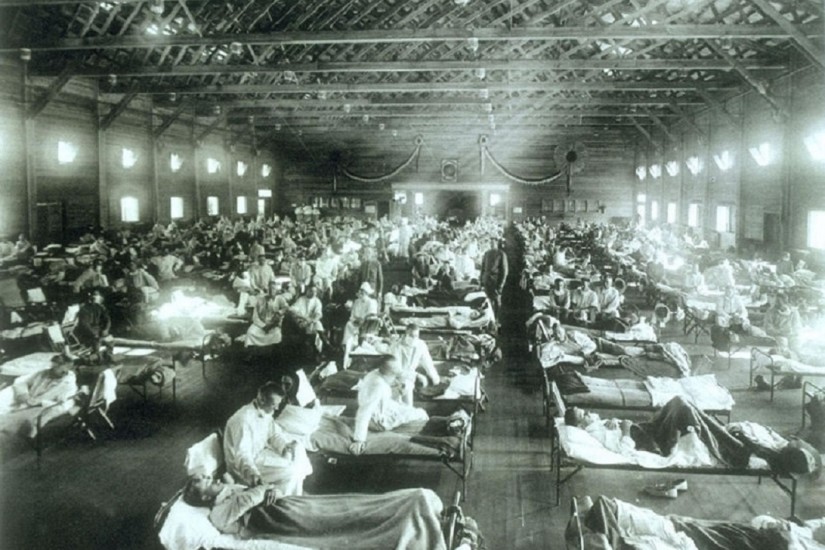The 1918-1919 influenza pandemic killed more people than combat did in the First World War. Maybe a lot more: fatality estimates range from 20-40 million to twice that around the globe. In the United States, a quarter of the population came down with the flu; some 675,000 died. Only the American Civil War has been more lethal.
At the time, medical authorities scrambled to combat the disease and its spread. Reviewing medical and scientific journals from a century ago offers up a fascinating window into a global medical crisis that burst out from the disasters of the First World War.
English speakers first knew the pandemic as “Spanish influenza” or “Spanish flu.” Neutral Spain didn’t have wartime censorship, so unfettered press reports of the flu coming out the country made it sound as if the nation was suffering worse than others. It wasn’t. The word “influenza” is from the Italian and means influence. The shortened “flu” has been used more frequently since the middle of the twentieth century. In 1918, “grippe,” originally from the French, still had some currency in English, as evidenced by the Maryland survey discussed below.
In October of 1918, the Canadian Public Health Association’s Public Health Journal reproduced a newspaper broadside from Chicago’s Commissioner of Health and the U.S. Surgeon General aimed at informing “every man, woman, and child” about the disease. There’s nothing here that sounds strange today: if you get sick, stay in bed and take plenty of liquids; seek medical attention if conditions worsen. Most people, after all, recovered after 3-4 days. Death usually came from complications, notably pneumonia. As a “catching disease,” severe attacks could be spread to others from the germs of someone who only manifested mild symptoms. (Cover your nose and don’t spit!) The term of art here is “germ.” “Virus” in its modern sense dates to Dmitri Ivanovsky’s 1892 discoveries, but the word does not seem to have been in general circulation.
A November 1918 issue of Scientific American lists many questions yet to be answered about the disease. It begins dramatically:
Striking in the pandemic proportions it usually assumes, and regarded with fear because of its frequently treacherously character, ‘Spanish’ influenza (so called), known for centuries, still remains the disease of mystery. Physicians assure us that, in a mild and often unrecognized form, it is always with us. Why is it that it suddenly flares up into a huge conflagration, which spreads rapidly over the greater part of the globe?
This March 1919 issue of Public Health Reports details a preliminary epidemiological study of the disease in parts of Maryland. Noting that “most sections of the United States” weren’t required to file reports of the disease, and that doctors were too “overwhelmed with urgent relief work” to do so, “morbidity reports received through the usual channels furnished no reliable index of prevalence of the disease.”
